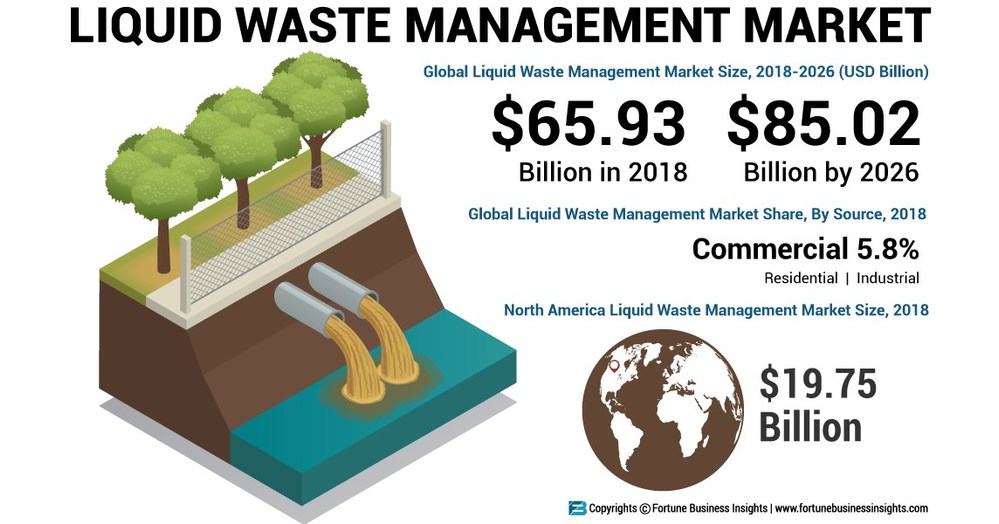Unknown Facts About Reclaim Waste
Unknown Facts About Reclaim Waste
Blog Article
Reclaim Waste Things To Know Before You Buy
Table of ContentsThe Reclaim Waste DiariesThe Basic Principles Of Reclaim Waste Getting The Reclaim Waste To WorkRumored Buzz on Reclaim WasteThe smart Trick of Reclaim Waste That Nobody is Talking About
Check out the types, occurrences, and kinds of liquid waste. Domestic sewer waste refers to the waste and products from a property septic container. This sort of waste is developed by people in residences, colleges, and various other structures. This only consists of septic containers that have a drain area. The proper monitoring and disposal of domestic sewer waste require liquid waste to be moved to a sewage therapy plant where the proper techniques and equipment are applied to cleanse and take care of waste.
Commercial waste typically includes possible dangers, such as combustible materials or a blend of fluid and solid waste products, and needs an extra sophisticated and comprehensive disposal procedure. The disposal of industrial waste normally includes the filtration of waste before transportation to make certain risk-free and appropriate disposal. Industrial waste is produced from byproducts and runoff of industrial processes and manufacturing.
This sort of waste can not utilize the exact same sewer administration transport or procedures as septic or business fluids. The commercial waste management procedure requires the assessment and screening of liquid waste prior to it undertakes the disposal process (liquid waste disposal). Overflow waste is the fluid waste that comes from runoff and excess stormwater in very populated locations or cities
Drainage waste can cause contamination and flooding if not managed properly. Making sure appropriate waste management can prevent disasters and lower environmental damage.
The Facts About Reclaim Waste Revealed
Get in touch with PROS Providers today to discover regarding our waste monitoring and disposal solutions and the appropriate ways to look after the liquid waste you generate.
(https://forums.hostsearch.com/member.php?271151-reclaimwaste1)Do you understand what occurs to your water when you disengage, purge the toilet or drain pipes the washing machine? No? Well, it deserves knowing. This so-called 'wastewater' is not only a crucial resource however, after therapy, will be launched to our land, rivers or the ocean. Made use of water from commodes, showers, bathrooms, kitchen sinks, laundries and industrial procedures is referred to as wastewater.

water made use of to cool machinery or clean plant and devices). Stormwater, a form of wastewater, is runoff that moves from agricultural and urban areas such as roofing systems, parks, gardens, roadways, courses and rain gutters right into stormwater drains pipes, after rain. Stormwater streams neglected directly to regional creeks or rivers, at some point getting to the ocean.
Getting The Reclaim Waste To Work
In Queensland, most wastewater is treated at sewer therapy plants. see page Wastewater is moved from residential or commercial websites through a system of sewers and pump terminals, called sewage reticulation, to a sewer therapy plant. Neighborhood governments construct, preserve and run most sewer treatment plants. Operators are accredited under the Environmental Management Act 1994 to release treated wastewater at an appropriate ecological criterion right into waterways.
The Division of Natural Resources recommends regional federal governments about managing, operating and keeping sewage systems and therapy plants. In unsewered locations, neighborhood federal governments might call for owners to mount specific or home sewer therapy systems to deal with domestic wastewater from bathrooms, kitchen areas, shower rooms and washings. The Division of Natural Resources authorises the use of household systems when they are shown to be reliable.
Many stormwater gets no therapy. In some new neighborhoods, treatment of some stormwater to get rid of trash, sand and gravel has started making use of gross toxin traps. Wastewater therapy occurs in four phases: Gets rid of strong issue. Bigger solids, such as plastics and other items incorrectly discharged to sewers, are eliminated when wastewater is gone through displays.
Uses little living microorganisms knows as micro-organisms to break down and eliminate staying liquified wastes and fine bits. Micro-organisms and wastes are incorporated in the sludge.
10 Easy Facts About Reclaim Waste Described
Nutrient removal is not readily available whatsoever sewage therapy plants because it requires costly specialist equipment. It is coming to be more usual in Queensland. Clear liquid effluent generated after therapy may still contain disease-causing micro-organisms. If this effluent is launched right into rivers such as rivers or the sea, the micro-organisms will at some point pass away out.

Many wastewater flows right into the sewage system. Under the Act, regional federal governments administer approvals and licences for eco appropriate tasks (Ages) including wastewater releases that may have a regional effect.
The Greatest Guide To Reclaim Waste
Monitoring offers factual details regarding water quality and can verify that permit problems are being satisfied. The information acquired via surveillance offers the basis for making water top quality choices.
Report this page